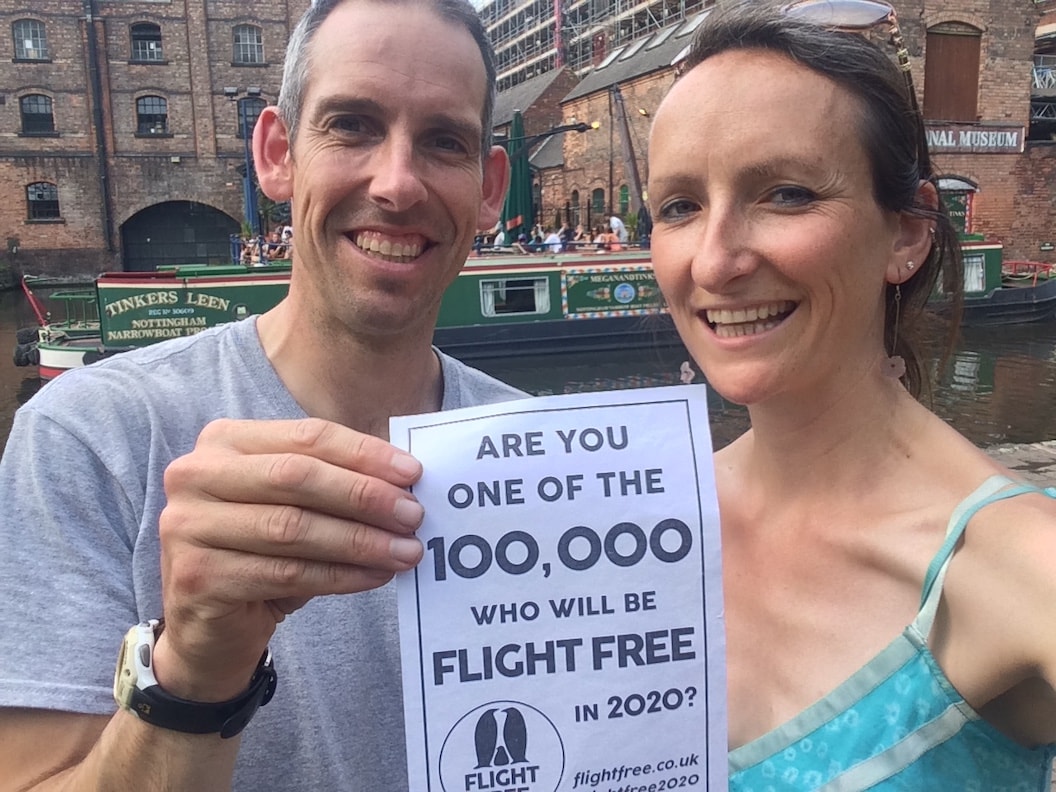I’ve seldom flown in the last few years so it’s no big deal for me, but people are amazed that you can travel – even live! – without flying. So here are a few thoughts about how to do it.
Of course the first thing to do is question whether you need to travel at all: would a phone call, video conference or email do the trick? Or a holiday nearer to home? To coin a phrase, ‘Is your journey really necessary?’
Cost
It’s not necessarily the case that trains are more expensive compared to flying or driving. Depending on where you’re going and when, you may need to do a bit more planning, but not always. However, you do need to know some tricks.
1. Split your ticket
When travelling in the UK, splitting the journey can make it much cheaper. The website splityourticket.co.uk will do this for you but it’s easy to do yourself: most rail company websites invite you to ‘book another ticket’ after you’ve booked the first one, so you get it all in one transaction. I always use LNER to book my tickets as it doesn’t charge fees and is pretty straightforward.
2. Book in advance
Booking straight through to London needn’t be so pricey either. Edinburgh to London trains booked just a few days in advance go from £70 upwards with city centre to city centre journey times of about 4 ½ hours, and trains every 30 minutes. Air travel (which involves transfers at both ends, plus time for security and boarding) will take you about the same time and at today’s price, Easyjet will cost you £61 at the lowest, flying to Stansted, so you’ll have to pay to get to/from the airport at each end, plus any baggage costs.
3. Get a railcard
If you are travelling in the UK regularly with someone else, or sometimes even for one long journey, get a Two Together Railcard. £30 for two for a year gets you 33% off most tickets. You need to travel together but you don’t have to have the card when you buy, as long as you have it when you travel.
Europe
The website you need for travelling in Europe is www.seat61.com. It’s a bit dense, but it’s worth the read. Choose the country you’re going to and it will tell you about the routes, the timings, the prices and where to buy tickets etc.
The site for buying tickets to most places is Rail Europe (formerly Loco2), but Seat61 may direct you for particular offers to Deutsche Bahn for trips to Germany, or to other operators for night trains etc, so read the details.
Eurostar tickets can be expensive, but can be purchased in advance more cheaply. The advantage of buying a through ticket to your final destination here is that if your Eurostar is late, you’ll be put on to the next one at no cost, whereas if you have separate tickets they may not be so obliging. Use the ‘booking alert’ system on Rail Europe to hear when tickets are available.
Stopovers
One thing to think about is whether it makes sense to do a stopover. When one of the Creative Carbon Scotland team and I had to go to Brussels for our EU project, she stopped over in London and saw an old friend while I went to see some family in Kent and got the Eurostar from Ebbsfleet. We both did a full day’s work on Tuesday, had a good evening and a good sleep and arrived in Brussels on time and relaxed. Colleagues from another Scottish company got up at 3:30am to catch the early flight, slept badly, were knackered at the meeting and had a lot less fun!
Hotels in London can be expensive but check out the Hub by Premier Inn, five minutes’ walk from King’s Cross or ten from St Pancras International which has nice, modern rooms fairly cheaply and a decent breakfast for £5. And Premier Inn has fairly good environmental credentials, too.
"My colleagues got up at 3:30am to catch the early flight, slept badly, were knackered at the meeting and had a lot less fun!"
Or think about stopping over in Paris – always cheaper with a certain je ne sais quoi. Or Brussels (can be pricey), Bordeaux or Strasbourg, where you can have a good cheap sleep and be on your way the next day. Use Booking.com to find a decent hotel near the station and then book the hotel direct if you can – often better prices and better for the hotel.
Time well spent
But you may not have to stop over. For example, my colleague Catriona and I went to Dusseldorf in February, and the 11 ½ hours door to door journey was solid good work/relaxing time, with easy connections, good wi-fi all the way and no hassles. Easyjet takes two hours in the air, but add another 2 ½ hours at least for checking in, which is stressful, and wasted time hanging around in queues rather than working or relaxing on the train.
InterRail
InterRail, that thing you did when you were young and impoverished, has modernised and is now both available and feasible for all. It’s worth looking at the Seat61 InterRail page, as it explains it pretty well, but a few key things to know are:
- It will cover your journey from within the UK as well as the European bits, but only to the Eurostar and back
- You will have to pay supplements to go on the Eurostar (£28.50 each way), some high speed trains, sleepers etc, but they generally don’t add up to much and get you the reserved seat
- You can get passes that cover 3 or 5 days, so they may be good for longer and more complicated journeys, like the ones we’re taking to Sweden in November for our EU project Cultural Adaptations
- You can get a first class one if it takes your fancy!
Summary
To sum up, here are a few things to think about:
Cost
- Planning – book early
- Planning – check whether it’s really more expensive
- Split tickets if in the UK
- Consider all costs: getting to and from airports, baggage
- Consider timings – trains may be more frequent so no extra overnights etc
- Would an InterRail pass be better value or more convenient for complicated journeys?
Time
- Consider all time-costs: getting to and from airports; check in, hanging around uselessly
- Consider timings – with fewer flights you may need to arrive or leave too early or be hanging around until late
- Consider work time – is the time more useful on the train for work/rest/research than on a plane, in airports, in transit, in queues?
And finally, if travelling both ways by train seems too big an ask, why not go one way by train and return by plane for your next trip? You’ll almost halve the carbon emissions and you’ll get the hang of it. Soon you might become an ardent Flight Free fan like me!
Find out more about Creative Carbon Scotland here, where you can also read an extended version of this article.


